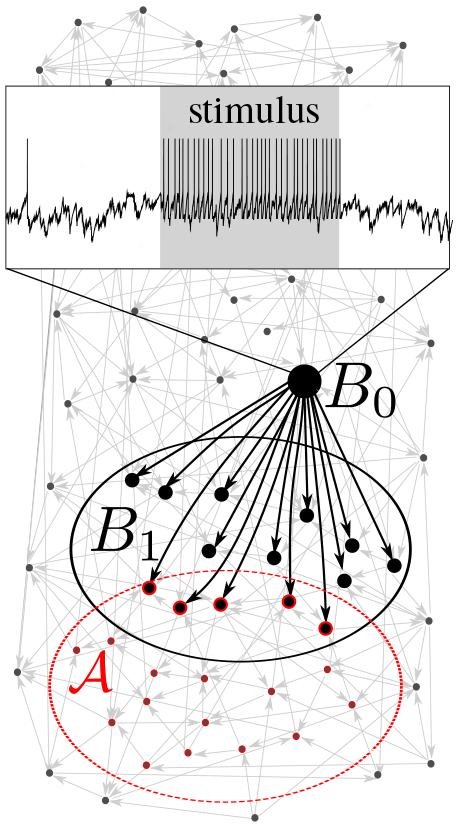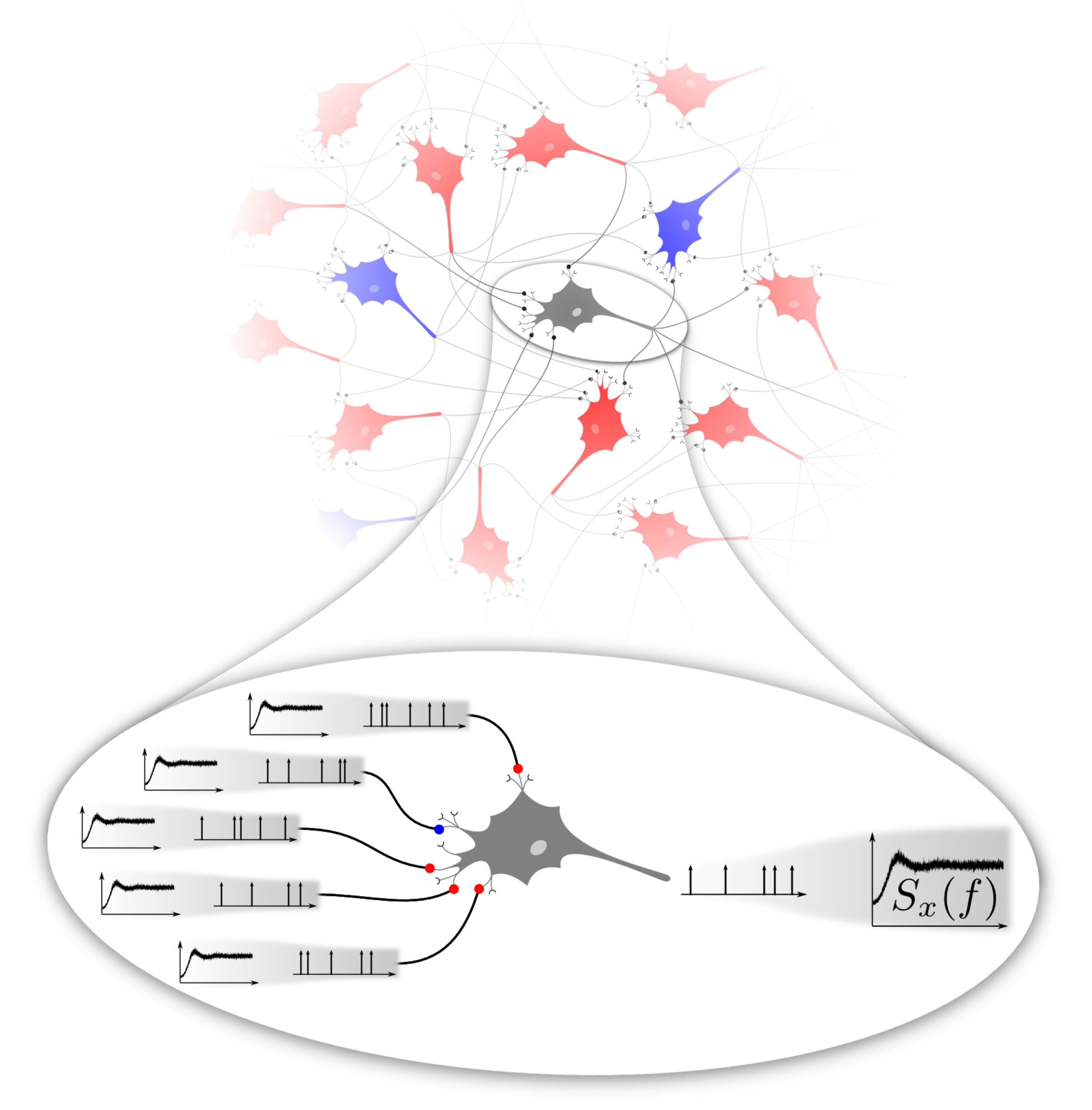Research Topics
Network Dynamics |
||||

|
If nonlinear elements, such as spiking neurons, are connected in a recurrent network, novel behavior emerges. We investigate collective effects (synchronization, clustering) in dynamics of different kinds of nonlinear coupled oscillators (Zaks and Tomov 2016). We are also interested in the so-called asynchronous state of recurrent networks of spiking neurons (which resembles cortical activity in attentive animals) and want to theoretically capture the network fluctuations emerging even in completely deterministic elements due to the chaotic interactions in the network (Wieland et al. 2015). The type of temporal correlations can change drastically upon changing cellular or connection parameters and the corresponding power spectra can be determined from the iterative simulation of a single neuron based on the self-consistency of fluctuations (Dummer et al. 2014). Another exciting and challenging problem is to understand how a single-cell stimulation in a large network can become noticeable on a macroscopic population level (Bernardi and Lindner 2017). |


|
||
